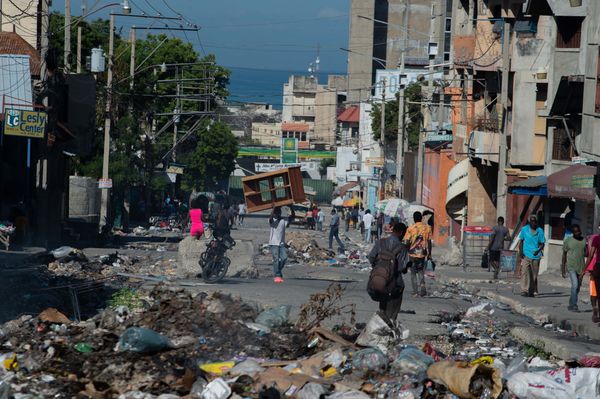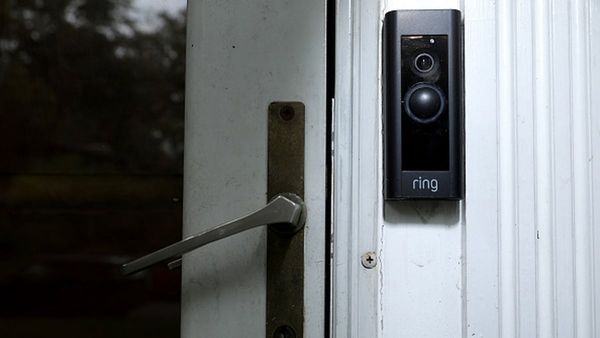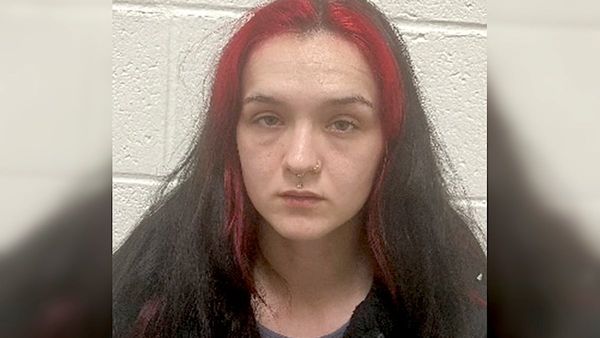

Moneyball is a bit of an old-school concept at this point that has seemed to be left in the dustpan of history and Hollywood, with the movie coming up on its 15th anniversary next year, and it being even longer since the system has actually been successful. The novel approach to team management popularized and most successfully deployed by the Oakland Athletics in the MLB in the early 2000s has been utilized to a much lesser extent and received much lesser results in most other major American sports leagues. One sports league in particular that has been inhospitable to the strategy has been the NBA. In an NBA dominated by huge contracts, mega-stars, and super teams, it would make sense that if it could work, some creative-thinking GM would have succeeded in actually utilizing it, but so far (unless you count the current Oklahoma City Thunder), we haven’t seen any GM succeed in implementing the system.
If anything, we’ve seen NBA GMs run as far away from Moneyball as they can, as most NBA teams are grossly over the salary cap and are hamstrung in free agency (besides the lowly Nets, of course). The real NBA has had zero appetite for a conservative fiscal approach to player management, with the last genuine attempt at a long, drawn-out team-building approach being the “Trust the Process” Sixers in the mid-2010s, and we all know how that turned out.
Just because Moneyball hasn’t worked in the real NBA doesn’t mean it can’t work in NBA 2K26, however. After all, we made it work in Madden 26, and how much more difficult could basketball be?
The Team
To create the team, I focused heavily on analytics and cap hits. I want the most bang for my buck, so I looked at stats like player efficiency rating (PER), +/-, true shooting percentage, and the contract structures of various NBA players. I found a number of highly efficient, cheap players and quickly composed a roster that I felt could potentially compete given the right circumstances. I put them all on the 76ers to remind myself to “trust the process” and started my franchise, setting a goal of winning a playoff game within three seasons.
- PG Malik Monk – 80 overall, 18.8M per year, 2 years left of team control
- SG Bradley Beal – 80 overall, 5.4M per year, 1 year of team control
- SF Christian Braun – 80 overall, 5M per year, 1 years of team control
- PF Yves Missi – 79 overall, 3.4M per year, 3 years of team control
- C Nick Richards – 77 overall, 5M per year, 1 year of team control
- 6th Cason Wallace – 79 overall, 5.8M per year, 2 years of team control
- 7th Naji Marshall – 78 overall, 9M per year, 2 years of team control
- 8th Donovan Clingan – 77 overall, 7.7M per year, 3 years of team control
- 9th Guerschon Yabusele – 77 overall, 5.5M per year, 1 year of team control
- 10th Jamal Shead – 73 overall, 2M per year, 2 years of team control
- 11th Aaron Holiday – 73 overall, 2.3M per year, 1 year of team control
- 12th Jase Richardson – 70 overall, 3M per year, 4 years of team control
- 13th Josh Minott – 71 overall, 2.4M per year, 2 years of team control
- 14th Asa Newell – 71 overall, 3.2M per year, 4 years of team control
- 15th Maxine Raynaud – 70 overall, 1.3M per year, 3 years team of control
Our total cap hit was a little under 80 million dollars, leaving us with a little over 75 million dollars in salary cap room that would be pure profits for the team owner (which is the real purpose of the Moneyball system).
Season One
In the midst of the first season, we traded Bradley Beal, who was likely to leave during free agency, and Maxine Raynaud, our 15th-best player, for:
- PG Payton Pritchard – 80 overall, 7.2M per year, 3 years of team control
- C Neemias Queta – 74 overall, 2.3M per year, 2 years of team control
We also traded Christian Braun and a 2030 draft pick to the Trail Blazers for one of the most efficient players in the league with a PER of 20.1 on an affordable controlled contract:
- PF Deni Avidja – 82 overall, 14.3M per year, 3 years of team control
Finally, we traded Guerschon Yabusele and Neemias Queta for:
- PG Ty Jerome – 79 overall, 9M per year, 2 years of team control
Despite losing Pritchard, Monk, and Clingan each for multiple months, we still clawed our way into the Play-in as the tenth seed after going 36-46. Unfortunately, we lost to the Rockets to end our first season.
Offseason One
In free agency, we added:
- PG Jose Alvarado – 77 overall, 7.5M per year, 3 years of team control
- PF Jonathan Mogbo – 77 overall, 2.4M per year, 1 year of team control
Because I played for the Philadelphia 76ers, we didn’t have a first-round pick in the draft, but still drafted a decent player in the second round.
- SF Maxwell Quinn – 73 overall, 1.3M per year, 1 year of team control
After the offseason, our roster looked like this:
- PG Payton Pritchard – 80 overall
- SG Malik Monk – 80 overall
- SF Ty Jerome – 80 overall
- PF Deni Avidja – 82 overall
- C Yves Missi – 80 overall
- 6th Cason Wallace – 80 overall
- 7th Donovan Clingan – 79 overall
- 8th Naji Marshall – 78 overall
- 9th Jose Alvarado – 77 overall
- 10th Johnathan Mogbo – 77 overall
- 11th Asa Newell – 76 overall
- 12th Jase Richardson – 75 overall
- 13th Jamal Shead – 74 overall
- 14th Josh Minott – 73 overall
- 15th Maxwell Quinn – 73 overall
We had a slightly above 90 million payroll, leaving about 65 million dollars in cap left for our money-hungry overlords.
Season Two
The season started terribly, and I could see the writing on the wall. The first season might have been a mirage, and this experiment might already be doomed, but I didn’t want to give up already. I just needed to take a different approach. After a brutal 16-35 start with a team full of players capped out at 80 overall, I decided to take a big swing at the trade deadline.
I traded Jonathan Mogbo, Jase Richardson, and Josh Minott for:
- Ivica Zubac – 87 overall, 19.5M per year, 2 years of team control
Zubac is a highly efficient center (21.6 PER) with star-caliber production (averaging well over a double-double per game and hitting on over 65% of his shots from the field). I figured if anyone could provide a spark for a relatively low price, it would be him.
While the addition of Zubac definitely helped soften the blow of the losing season, we still ended up with an abysmal 32-50 record in what we thought would be a better year than last, but alas, we were punched in the teeth, and my resolve has taken a major blow.
Offseason Two
In the draft I added:
- SF Stanley Cunningham – 78 overall, 7.4M per year, 4 years of team control
I traded Yves Missi and Malik Monk for:
- SG Bub Carrington – 82 overall, 7.3M per year, 1 year of team control
In free agency, I added:
- SF Michael Porter Jr. – 79 overall, 16M per year, 3 years of team control
- PG Nikola Topic – 79 overall, 7.5M per year, 1 year of team control
Here’s the roster going into the final year:
- PG Nikola Topic – 81 overall
- SG Bub Carrington – 84 overall
- SF Michael Porter Jr. – 81 overall
- PF Deni Avidja – 80 overall
- C Ivica Zubac – 85 overall
- 6th Donovan Clingan – 80 overall
- 7th Cason Wallace – 80 overall
- 8th Payton Pritchard – 80 overall
- 9th Stanley Cunningham – 78 overall
- 10th Asa Newell – 77 overall
- 11th Jose Alvarado – 73 overall
- 12th Aaron Holiday – 72 overall
- 13th Jamal Cain – 72 overall
- 14th Alex Reese – 71 overall
- 15th Ariel Hukporti – 70 overall
Our salary hit was a bit higher than the previous two seasons, now sitting at a little under 125 million, giving our owner a solid 35 million left in profits.
Season Three
After a brutal season that I powered through without many breaks or any trades, we ended at a meager 33-49, which puts a bow on this disappointing three-season experiment. I was set on going three just three seasons, and I’m not extending just because I failed. I will take the failure with dignity and relish in the lessons I learned.
My Final Takeaways
As for whether Moneyball can work in the NBA, I think we already knew the answer before we started this. Professional basketball isn’t designed for small-market analytics-based team building (nor is any modern-day professional sports entertainment league anymore, sorry, Billy Beane).
As for NBA 2K26, I think the talent spread in the game makes succeeding with a Moneyball strategy uniquely challenging. I learned through this process that no matter how many 80 overall players you have, the game rewards star players (think 90 overall or above) in simulations, and you simply can’t win without one or two dominant players. I think the best chance you’ll have to accomplish this Moneyball feat is to focus on grabbing high-potential rookies and rolling with them through their first four seasons. This is a strategy that I purposely didn’t engage with because it’s not in the spirit of the original Moneyball philosophy (however, it has been the primary strategy for small-market baseball teams since the mid-2000s).
If you can find cheap superstars like I tried (and failed) to do with Ivica Zubac, you might be able to make it work, but this is certainly not a challenge for the faint of heart or the deeply pocketed.







